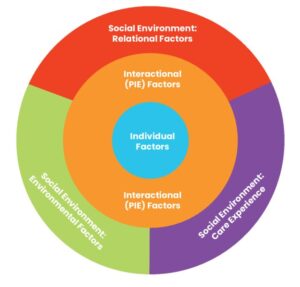New Study Results: Supporting School Personnel in Managing School Emergency Events and Crafting Emergency Response Plans
NYKids is delighted to highlight this guest blog from University at Albany colleagues. As this research is not our own, please direct any comments or questions to the first author.
By, Kristie Asaro-Saddler, Ph.D, Christine Smith, Ph.D., Heather Kurto, Ph.D., and Jamie Gahtan, M.S Ed
District and school leaders have a legal and moral responsibility to protect all staff and students, including students with disabilities (SWD) in the event of an emergency. Federal mandates specifically require schools to have a crisis plan, and this plan must meet the requirements of the Americans with Disabilities Act by requiring disability-related assistance whenever needed. Unfortunately, there is no national model or guidelines for emergency preparedness planning. As a result, teachers and other school staff members often feel unprepared to respond to a school emergency event.
What are School Emergency Events and Emergency Response Plans?
School Emergency Events (SEE) are often equated with violence, such as school shootings, yet there are many potential SEEs that students are at risk of experiencing. For example, fires, infectious disease outbreaks, weather-related events such as tornadoes and floods, and even playground injuries can create situations in which teachers and other school personnel require an immediate response. To be proactive in planning for such events, schools are required to have a school emergency operations plan, also known as an Emergency Response Plan (ERP).
School ERPs should be a collaborative process that involves a core planning team of school/district staff and faculty working alongside local stakeholders such as law enforcement. Once these plans are developed, training for school personnel and students is an important part of the ERP process. Planning includes tabletop activities, in which the team can meet and discuss how to respond to a simulated event, and frequent drill and practice. Training prepares teachers and other school staff about the policies, procedures, roles, and responsibilities in their school’s plan, and how to prepare their students for emergency procedures. Although there is minimal empirical research in this area, scholars have found that proactive planning for the inclusion of students in ERPs, including drills and training, allows for school personnel to feel more prepared and ready to support all students. The development of ERPs may also build teacher resilience, defined as the ability to adapt to change, overcome adversity, and learn from failures.
The Study

To assess the knowledge and preparedness of school personnel to handle a SEE, we (Kristie Asaro-Saddler, Ph.D., Christine Smith, Ph.D., Heather Kurto, Ph.D., and Jamie Gahtan, M.S) designed a survey administered to a variety of school personnel: school administrators, teachers and teacher assistants/aides, and staff that work in or around the school building, including but not limited to bus drivers, librarians, administrative support staff, custodial staff, cafeteria staff, and lunch aides. One hundred forty-one participants, the majority of whom were from New York State, completed the survey. For the purposes of this blog, we have chosen to focus on the open-ended questions that asked participants what concerns they had in terms of supporting their students, and what might help them feel safer or more prepared to deal with a SEE.
We used van Breda’s resilience framework, a nested system model where the individual is at the center, social structures occupy the middle layer, and environmental structures are the outermost layer, to analyze how teachers view the effectiveness of emergency response plans. The individual layer references an individual’s mental/physical health, genetics, and personality traits, the social level is the support networks, education, learned skill sets, and acquired knowledge to support the individual’s ability to overcome adversity, and the environmental structures refer to the institutions, access to resources, policies, geography, and socioeconomic impacts on both the social and individual layers.
What Did We Find?
Responses were coded with higher frequencies at the environmental level, followed by the social level, with the lowest frequency being coded at the individual level.
Environmental structures that teachers reported as effective to support ERPs were:
- access to resources in the form of physical supports (locked doors, ability to block points of entry, school resource officers) and
- additional training through school safety meetings, and practice drills.
Social structures respondents referenced were:
- the need to collaborate across job titles to create safety plans and
- increasing communication around roles and responsibilities of those involved in the implementation of ERPs.
Individual level factors respondents were concerned with were:
- building trust across agencies to protect staff and students and
- coping with stress. Furthermore, they had concerns about how to support students with disabilities, specifically physical disabilities, in the event of an emergency.
How Can Leaders Support Teachers to be Prepared?
 The resilience framework provides insights into where gaps in the implementation of training for ERPs occur. At each level there are prominent concerns that policymakers and school building and district leaders can consider when rolling out ERPs.
The resilience framework provides insights into where gaps in the implementation of training for ERPs occur. At each level there are prominent concerns that policymakers and school building and district leaders can consider when rolling out ERPs.
- The environmental level suggests that policymakers and school building/district leaders need to consider funding for physical resources to maintain building safety. Additionally, practicing safety drills with fidelity, in a consistent manner, followed up by collaborative reflection would support higher levels of confidence and resilience that teachers can meet the demands of potential emergencies.
- The social level could use these reflections to promote collaborative spaces for all employees to collaborate on how to implement the ERP more effectively. Using checklists such as the ones provided by the New York State Department of Education may help leaders by providing a framework for how to set up training and can serve as a record that allows for transparency and clear communication across all parties. This collaborative approach could also meet the needs of the individual, to increase trust across agencies to promote the confidence needed to protect staff and students during an emergency event. Furthermore, an Individual Emergency and Lockdown Plan should be developed for all students with disabilities to note any needed accommodations and outline the ways in which school personnel will need to support the student during a SEE. Resources such as those provided by the Readiness and Emergency Management for Schools Technical Assistance Center can be shared with special education teachers and other staff who support students with disabilities.
Final Thoughts
School leaders play a pivotal role in creating and fostering an environment that is safe and conducive to learning. Many participants in our study credited their building and district leaders with doing “all they could” to promote safe spaces in their schools. This study provides some valuable insights about what leaders need to understand about emergency preparedness from the perspectives of school personnel with implications for what they might better do to build resilient staff and students in dealing with a potential SEE.
Kristie Asaro-Saddler, Ph.D. is an Associate Professor and the Director of the Division of Special Education at the University at Albany. Her research interests include supporting students with disabilities and diverse learning needs and their teachers in the classroom and understanding the lived experiences of autistic children and their families from underrepresented areas.
Christine Smith, Ph.D. is the Assistant Dean for Academic Programs, Partnerships and Accreditation, Executive Director for Student Success, University Certification Officer and Assistant Service Professor at the School of Education, University at Albany-SUNY. Her research interests include emergency preparedness and management in schools and colleges and support of pre-service and in-service teachers.
Heather Kurto, Ph.D. is a special education teacher in a public school in upstate New York. Her research interests include qualitative studies that tell the lived experiences of students who receive special education services in public school settings.
Jamie Gahtan, M.S. Ed is a doctoral student in Educational Psychology and Methodology at the University at Albany. Her research interests center on children’s social and cognitive development.
Tag:emergencies, plans, research, safety, survey
